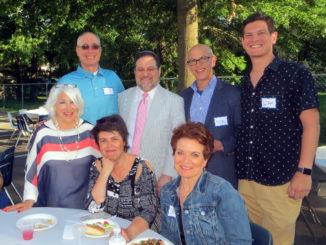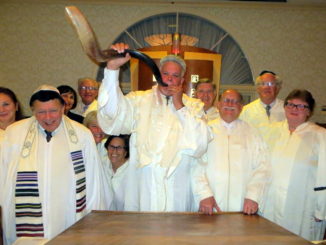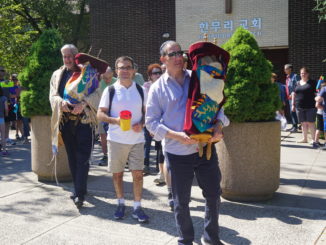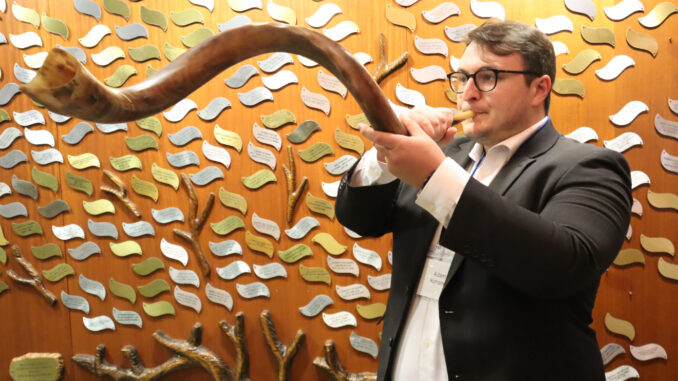
NORTHERN VALLEY—The Jewish High Holy Days are a time of introspection and celebration. Also called the High Holidays or the Jewish New Year, they encompass the 10 days from the beginning of Rosh Hashanah through the end of Yom Kippur.
On the evening of Sept. 15, people around the world began celebrating Rosh Hashanah, the holiday that commemorates the creation of the world.
Beginning as far back as biblical times, Jews everywhere spend the Jewish New Year in the homes of friends and family and in synagogues carrying on the age-old tradition referred to as L’ Dor-V’Dor, generation to generation.
In Hebrew, Rosh Hashanah means, literally, head of the year or first of the year.
In Jewish tradition, Rosh Hashanah marks the anniversary of the creation of the world as described in the Torah. It is also the day on which God inscribes the fate of each person in either the “Book of Life” or the “Book of Death,” determining both if they will have a good or bad year and whether individuals will live or die.
Rosh Hashanah also marks the beginning of a 10-day period on the Jewish calendar that focuses on repentance or Teshuvah. Jews mark the holiday with festive meals and prayer services and greetings of L’shanah Tovah Tikateiv V’techateim, which means “May you be inscribed and sealed for a good year.”
Rosh Hashanah falls once a year during the month of Tishrei, the seventh month on the Hebrew calendar which takes place in early autumn in the Northern Hemisphere.
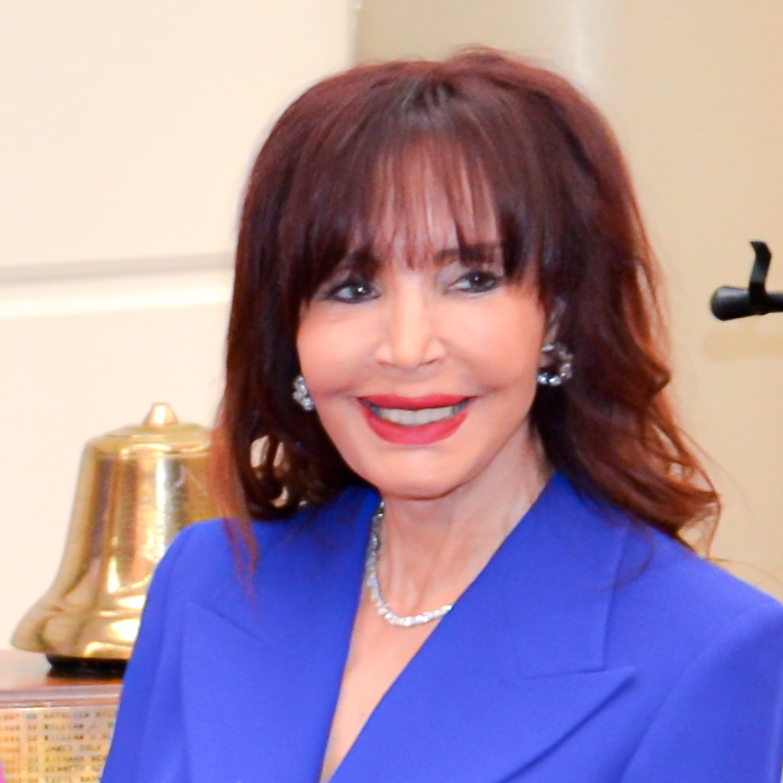
In many congregations, Rosh Hashanah is celebrated on two successive days.
The Jewish New Year, one of the holiest observances in Judaism, is vastly different than the American New Year tradition of midnight partying followed by a daytime watching sports on television
There is, however, one important similarity between the Jewish New Year and the American one – many Americans use the New Year as a time to make resolutions to break bad habits and begin a better lifestyle.
Likewise, the Jewish New Year is a time when Jews begin introspection, looking back at mistakes and unfulfilled promises, reconciling with people they have wronged, as well as planning the changes to make in the New Year.
The Jewish New Year begins with Rosh Hashanah and ends with Yom Kippur. This 10-day period is commonly known as the Days of Awe (Yamim Noraim) or the Days of Repentance.
Rabbi Stevn Sirbu of Temple Emeth in Teaneck, explains the importance of the Jewish New Year very eloquently:
“Rosh Hashanah and Yom Kippur serve to bind the Jewish people together in united purpose. The theme of renewal gives us hope for the future and the traditional acts of repentance, prayer and charity bring us closer to one another and G-d. Socially, the first major holiday after the summer travel season helps every congregation feel like a community again.”
Tradition!
The Jewish New Year is steeped in traditions. On the eve (Erev) of Rosh Hashanah, the New Year is heralded by the blowing of the Shofar in the synagogue. The Shofar is one of the earliest instruments used in Jewish music. It is usually made from a ram’s horn, but it can also be made from the horns of other animals, including those of a goat or sheep. It sounds somewhat like a trumpet, but unlike a trumpet, it does not have a mouthpiece.
So sacred is this tradition, that it is believed that even during the Holocaust, some Jews risked their lives by blowing a Shofar on Rosh Hashanah while imprisoned in Nazi concentration camps.
It is also traditional for Jewish families to gather for special meals to celebrate Rosh Hashanah. Over the centuries, this holiday has become associated with many food customs, for instance, eating sweet food like apples dipped in honey to symbolize people’s hopes for a “Sweet New Year.”
Many Jewish households also make honey cakes on Rosh Hashanah as another way to symbolically express their wishes for a Sweet New Year.
Challah bread, which is usually baked into braids, is shaped into round loaves of bread on Rosh Hashanah. The circular shape symbolizes the continuation of life.
Other popular foods eaten on the Jewish New Year include carrot stew and fish. The head of the fish symbolizes the “Head of the Year,” and also symbolizes God’s leadership.
No work is permitted on Rosh Hashanah. Much of the day is spent in synagogue, where the regular daily liturgy is somewhat expanded. In fact, there is a special prayer book called the “Machzor” that is used for Rosh Hashanah and Yom Kippur because of the extensive liturgical changes for these holidays.
One of the most important prayers of the New Year is Unetaneh Tohkef, a prayer about life and death. Part of it reads: “On Rosh HaShanah it is written, and on Yom Kippur it is sealed, how many will leave this world and how many will be born into it, who will live and who will die… But penitence, prayer and good deeds can annul the severity of the decree.”
Another popular practice of the holiday is Tashlich (“casting off”), a Jewish custom dating back to medieval times. Jews walk to flowing water, such as a creek or river on the afternoon of the first day of Rosh Hashanah, say a few prayers and empty their pockets into the river, symbolically casting off their sins. Small pieces of bread are commonly put in one’s pocket to cast off.
An interesting variation of Tashlich takes place at Temple Sinai of Bergen County on Rosh Hashanah, where the afternoon service is outdoors at the Demarest Duck Pond. Rabbi Jordan Millstein explains:
“Many people use bread crumbs, but at Temple Sinai we use pebbles as bread is not good for the ducks at the Demarest Duck Pond!”
The common greeting for the Jewish New Year is L’shanah Tovah, which means “May you be inscribed and sealed for a good year.”
Reflection, Atonement in Today’s World
Although the Jewish High Holidays’ themes of reflection and atonement date back centuries, they are especially relative today, as the world confronts increasing anti-Semitism, hatred and violence.
For many people, including non-Jews, the Jewish New Year has personal as well as historical significance. Rabbi Steve Meltz of Chavurah Beth Shalom in Alpine believes that this is because “At Rosh Hashanah, when according to Jewish tradition time began, we celebrate the world and that part of G-d that resides within it, and within us all.
“We share this divine spark not just with other Jews, but with all humanity… for each of us is a creation of G-d and therefore, each of us is deserving of our respect. My wish is that the coming year brings peace to the entire human family in every part of the world.”

